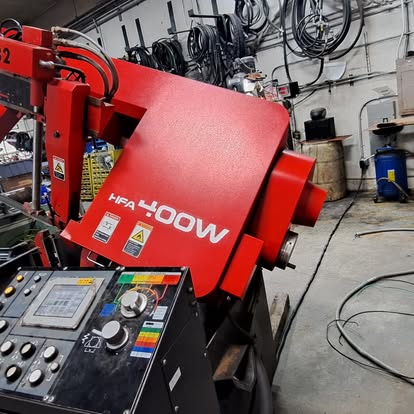
Innovative Techniques in Metal Fabrication: A Guide for Professionals Oct 06, 2025
The landscape of metal fabrication is changing, and automation is leading this transformation. Automation within fabrication processes reduces human error and increases production speed. Technologies like robotic welding and automated cutting systems enhance precision and produce consistent results. Integrating automation requires an initial investment, but the long-term benefits in terms of productivity and consistency are undeniable.
One of the most revolutionary techniques in metal fabrication today is additive manufacturing, commonly known as 3D printing. For metal fabricators, this technique offers the ability to create complex geometries that were once impossible or too costly to produce using traditional methods. The versatility of 3D printing permits the use of various metal powders, allowing for innovation in creating custom components with reduced material waste and faster turnaround times.
Computer Numerical Control (CNC) machining is another technique that has seen significant advancements. Modern CNC machines are capable of achieving incredibly tight tolerances and superior finishes. These machines, controlled by precise computer programs, allow for the intricate shaping of metal workpieces. For professional fabricators, mastering CNC programming can lead to reduced lead times and improved product quality.
Laser cutting is yet another technique that is transforming metal fabrication. It provides cleaner cuts and better edge quality than traditional cutting methods. Laser cutting is particularly beneficial for sheet metal fabrication, where precision and speed are essential. With the ability to cut through various metal thicknesses with high accuracy, fabricators can create elaborate designs with minimal waste.
Sustainability is increasingly becoming a focus in metal fabrication, fostering innovation in recycling and materials management. Techniques that minimize waste, such as waterjet cutting, which uses a high-pressure jet of water with abrasive substances, are gaining popularity. This method not only provides clean cuts but is also environmentally friendly, as it avoids producing hazardous fumes and reduces the amount of waste material.
Hybrid manufacturing, which combines additive and subtractive processes, is emerging as a powerful method in the fabrication industry. It allows for the creation of parts with enhanced mechanical properties and surface finishes. By integrating these processes, fabricators can take advantage of the best features of each technique, leading to innovative solutions and improved component performance.
Professionals looking to stay ahead must not only understand these innovative techniques but also continue learning and adapting to new technologies. Training and collaboration are key, as the skills required are constantly evolving.
In conclusion, the metal fabrication industry is in the midst of a technological revolution. For professionals at Mid-Mountain Maintenance, embracing these innovative techniques will be crucial in maintaining competitive advantage and delivering high-quality products. By leveraging automation, additive manufacturing, CNC machining, and sustainable practices, fabricators are poised to push the boundaries of what is possible, crafting the future of metal fabrication with precision and creativity.
/filters:no_upscale()/media/bc6c11f5-1a2f-4184-b719-3e67b435ca6c.jpeg)
/filters:no_upscale()/filters:format(webp)/media/03cbd600-0d58-4ea0-8903-2f73dab142ac.jpeg)